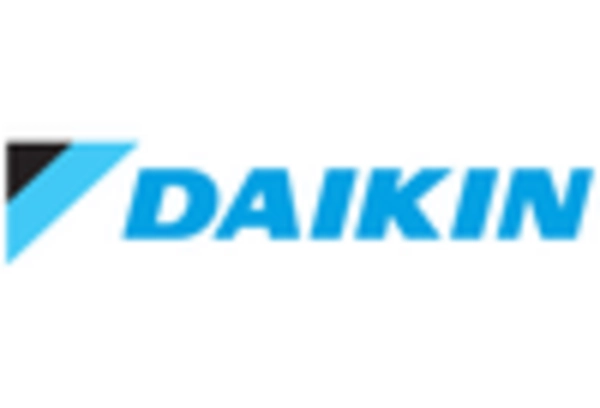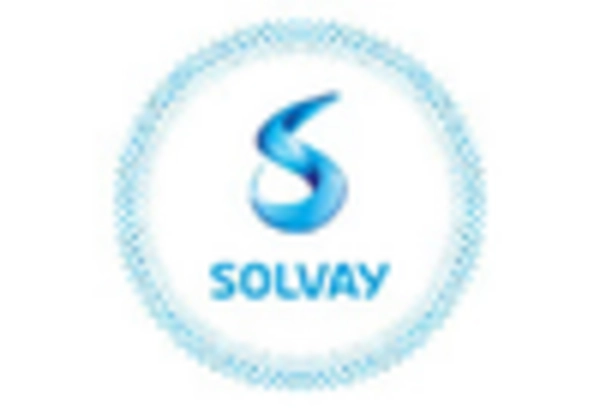Growing Applications in Aerospace
The ethylene tetrafluoroethylene (ETFE) sector is experiencing a notable increase in demand due to its expanding applications in the aerospace sector. This material is favored for its lightweight and high-performance characteristics, which are essential for modern aircraft design. The aerospace industry in the US is projected to grow at a CAGR of approximately 4.5% over the next few years, driving the need for advanced materials like ETFE. As manufacturers seek to enhance fuel efficiency and reduce emissions, the ethylene tetrafluoroethylene market is likely to benefit from this trend. Furthermore, the material's resistance to extreme temperatures and chemicals makes it suitable for various aerospace components, thereby solidifying its position in this competitive market.
Expansion of the Automotive Industry
The ethylene tetrafluoroethylene (ETFE) sector is experiencing growth due to the expansion of the automotive industry, where ETFE is increasingly utilized for various applications. The US automotive sector is undergoing a transformation, with manufacturers seeking lightweight materials to improve fuel efficiency and reduce emissions. ETFE's properties, such as chemical resistance and durability, make it suitable for automotive components, including seals and gaskets. As the demand for electric and hybrid vehicles rises, the need for advanced materials like ETFE is likely to increase. This trend suggests that the ethylene tetrafluoroethylene market could see significant growth as automotive manufacturers continue to innovate and prioritize sustainability.
Increased Focus on Energy Efficiency
The ethylene tetrafluoroethylene (ETFE) sector is significantly influenced by the rising emphasis on energy efficiency across various industries. ETFE's excellent thermal insulation properties contribute to energy savings in building applications, which is particularly relevant in the US construction sector. With energy costs continuing to rise, the demand for materials that enhance energy efficiency is expected to increase. The US government has implemented various regulations aimed at promoting energy-efficient building practices, which could further stimulate the ethylene tetrafluoroethylene market. As a result, architects and builders are increasingly incorporating ETFE into their designs, recognizing its potential to reduce energy consumption and lower operational costs.
Advancements in Manufacturing Techniques
The ethylene tetrafluoroethylene (ETFE) sector is poised for growth due to advancements in manufacturing techniques that enhance the production efficiency of ETFE. Innovations such as improved extrusion processes and the development of new polymer blends are enabling manufacturers to produce ETFE at lower costs while maintaining high quality. This is particularly relevant in the US, where the demand for cost-effective yet high-performance materials is on the rise. As production costs decrease, the accessibility of ETFE is likely to increase, allowing for broader adoption across various industries. Consequently, the ethylene tetrafluoroethylene market may witness a surge in applications, particularly in sectors such as construction and automotive.
Rising Demand in the Construction Sector
The ethylene tetrafluoroethylene (ETFE) sector is benefiting from the increasing demand in the construction sector, where ETFE is recognized for its lightweight and durable properties. The US construction industry is projected to grow steadily, with a focus on innovative materials that enhance building performance. ETFE is particularly valued for its ability to allow natural light while providing excellent insulation, making it an attractive option for modern architectural designs. As urbanization continues to rise, the need for sustainable and efficient building materials is likely to drive the ethylene tetrafluoroethylene market forward. This trend is further supported by the growing popularity of green building certifications, which encourage the use of environmentally friendly materials.

















Leave a Comment